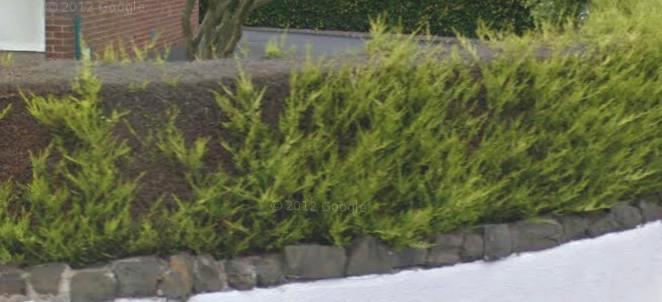
Conifer trees and hedges can develop dead patches which can range from a few centimetres to several metres across. There are several possible causes, but usually whatever it is the trees are under stress at the time. Dryness at the roots is a commom cause of stress to plants. Aphids and scale insects can attack the plant, sucking the sap and weakening it.
The fungal genus Pestalotiopsis (or Pestalotia) has many species which attack conifers. Examiing the brown foliage would reveal tiny black fruiting bodies of the fungus. When the spores have been released these pinhead-sized growths have a pit in the centre. the spores are more easily dispersed in wet weather, erupting in strings, and can enter the tissues of the plant through damage caused by an aphid attack or when a hedge is trimmed.
There is no control apart from cutting out and destroying all of the brown foliage to reduce the amount of spores available to spread the infection. This may not be possible with a hedge, so if there is healthy growth nearby it could be tied into the dead area after some of the damage has been pruned out to make room.
Dryness can be due to drought or the roots may have become constricted either in a container or the site is restricted. The roots may not have grown out well enough from the original rootball when planted - it is important to tease out or cut roots which are growing in a circular direction, following the contours of the pot. Recent practice is to dig a square hole when planting, particularly in hard ground, so any roots venturing out are more likely to go straight rather than do a u-turn and follow around the sides as they might in a round hole.
Other preventive measures are cutting and pruning at certain times to reduce the chances of infection. Spring and summer are best, but the autumn and especially October are the worst times to cut conifer hedges. Avoid trimming during prolonged wet weather. Water during periods of drought and if aphids or scale insects are present, they should be treated with an insecticide.
There may be some prevention from spreading by using one of the fungicides that are allowed for use by gardeners to treat ornamental plants, but there is no information on such use.
Back to article on Plant Diseases